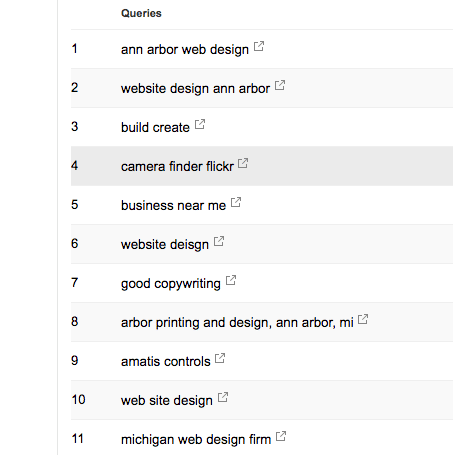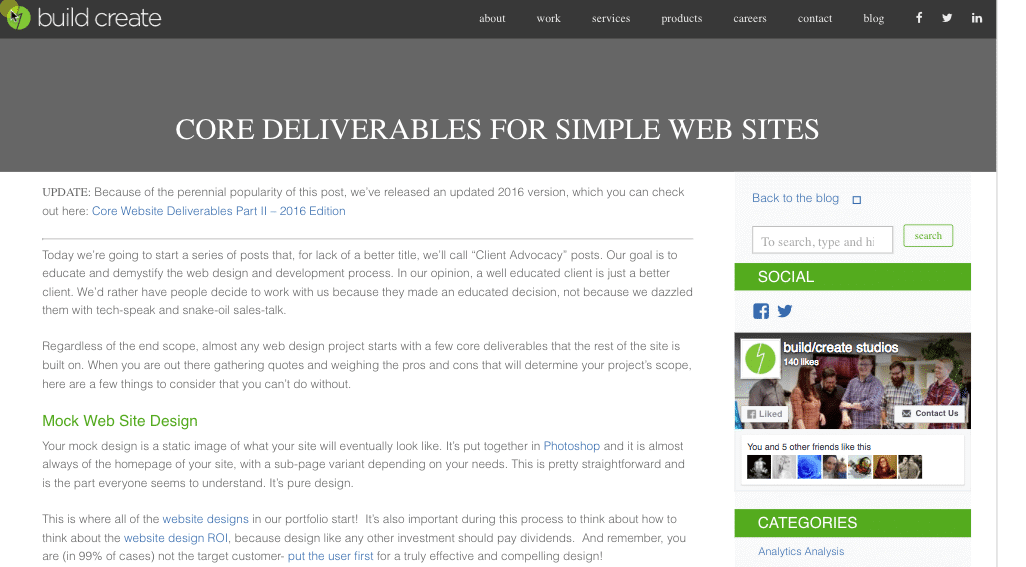When you think of the two phrases: “User Experience” and “Searcher Intent” they don’t seem to have much in common. Searcher intent is all about how a company gets to your website. And user experience is all about how they interact with it when they get there. But the truth is, user experience and searcher intent have a lot more in common that you think.
Sure there is a separation in many ways. But when it comes to content, user experience and searcher intent need to work together. But how?
Let’s look at 3 ways searcher intent and user experience can work collectively to get your website the results you want.
Step 1: The Goal
 What is the goal of your website? Is your website about lead generation or to reinforce your brand? (for more on this subject, check out Eric’s video) If the goal of your website is to generate leads, learn what searchers are doing to find your site.
What is the goal of your website? Is your website about lead generation or to reinforce your brand? (for more on this subject, check out Eric’s video) If the goal of your website is to generate leads, learn what searchers are doing to find your site.
Using dynamic ads in AdWords, or looking at the Search Console / Google Analytics for what searches you came up for (if you’re not using SEM tools to do this) will help you find out what Google is ranking you for and what people are looking for.
Step 2: The Change
 We use a tool called Inspectlet to view heat maps and also session recording. By using these user experience tools, we can make marketing changes to the content of our websites on a regular basis. If searcher intent is saying – “visitors want to learn about X,Y, or Z products” changing the language of our website to reflect that is imperative.
We use a tool called Inspectlet to view heat maps and also session recording. By using these user experience tools, we can make marketing changes to the content of our websites on a regular basis. If searcher intent is saying – “visitors want to learn about X,Y, or Z products” changing the language of our website to reflect that is imperative.
From there we can measure results over time as we change our content to reflect what searchers are hoping to find.
Step 3: The Results
A/B testing and content refinement is part of the equation, the results are based in what did they do with their new information. Did we get more downloads? More leads? Did our content change actually resonate with the visitor’s expectations when they got to the site?
Going back to the goals, we have to be able to quantify how changing one aspect of the website, or a single page, resulted in either increased traffic, better rankings, or more leads. Sometimes the result we wanted isn’t the result we end up getting.
For this example, I’ll use our own website. We have a piece of content that drives a significant amount of traffic to our website. It’s related to our industry, and you would think would result in visitors becoming leads. But sadly it doesn’t.
The problem is that it’s searcher intent is to discover an answer to something after you’ve already made a choice. It’s like asking the waiter should I order fries with this after getting your meal. The searcher intent doesn’t line up with the goals of our website.
We keep this content piece, and create more like it because it’s an excellent source of traffic. But we’ve shifted our expectations of the goal that it brings to us based on the user experience. This is an education piece; a brand reinforcement blog that shows we know what we’re talking about.
What taught us this was not just searcher intent but user experience testing. Watching, learning the behavior of the visitor. They weren’t there to find their new web designer. They were there to learn what they should be getting from their existing one.
Conclusion
You need user experience and searcher intent concepts to get to the heart of what your visitors want. But you also have to be ready to be flexible in what your expectations are. Not everything you do will be about a sale or a lead.
If you need more leads from your website, consider looking at how users interact with your content and how you can lead them down a path with better user experience. Merging the two is the ultimate way of going about this.





